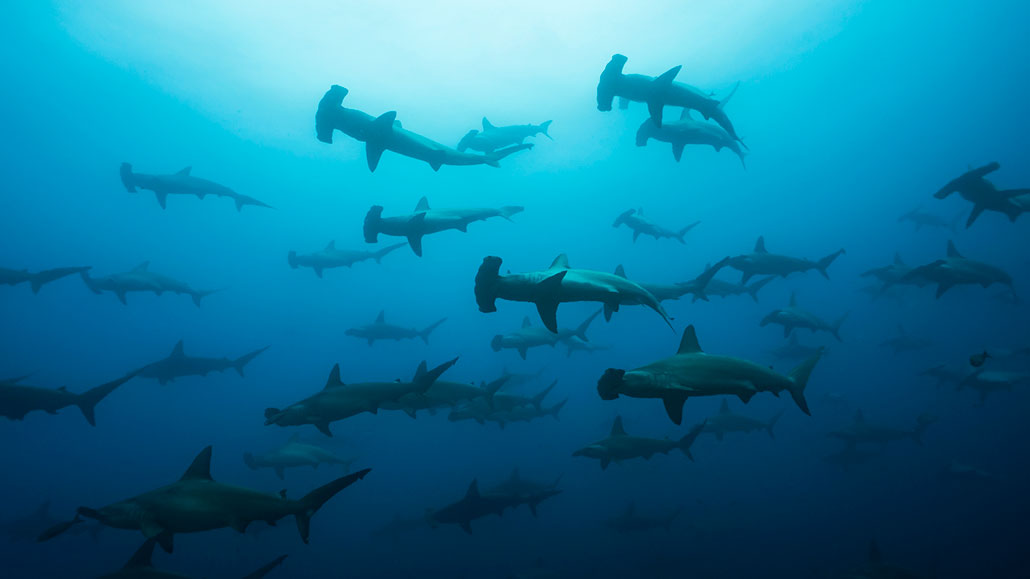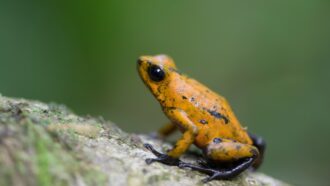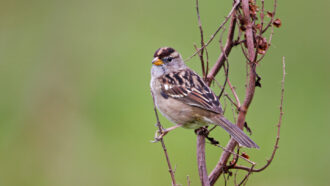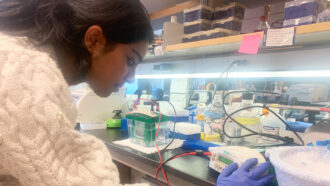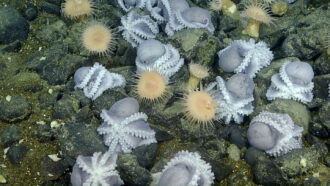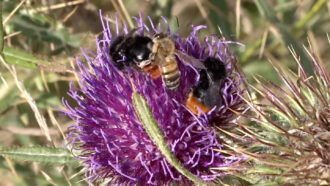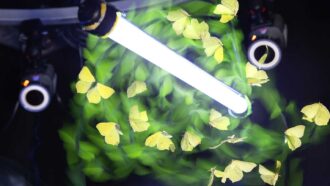birds: Warm-blooded animals with wings that first showed up during the time of the dinosaurs. Birds are jacketed in feathers and produce young from the eggs they deposit in some sort of nest. Most birds fly, but throughout history there have been the occasional species that don’t.
carnivore: An animal that either exclusively or primarily eats other animals.
ecological: An adjective that refers to a branch of biology that deals with the relations of organisms to one another and to their physical surroundings. A scientist who works in this field is called an ecologist.
electric field: A region around a charged particle or object within which a force would be exerted on other charged particles or objects.
electricity: A flow of charge, usually from the movement of negatively charged particles, called electrons.
extinct: An adjective that describes a species for which there are no living members.
field: An area of study, as in: Her field of research was biology. Also a term to describe a real-world environment in which some research is conducted, such as at sea, in a forest, on a mountaintop or on a city street. It is the opposite of an artificial setting, such as a research laboratory. (in physics) A region in space where certain physical effects operate, such as magnetism (created by a magnetic field), gravity (by a gravitational field), mass (by a Higgs field) or electricity (by an electrical field).
fossil: Any preserved remains or traces of ancient life. There are many different types of fossils: The bones and other body parts of dinosaurs are called “body fossils.” Things like footprints are called “trace fossils.” Even specimens of dinosaur poop are fossils. The process of forming fossils is called fossilization.
gel: A gooey or viscous material that can flow like a thick liquid.
Great Dying: A period of time roughly 252 million years ago when at least 70 percent of all land species and 96 percent of ocean species went extinct. Ot was the greatest mass extinction in Earth’s history. These species fell victim to changing climate and ecological changes.
liver: An organ of the body of animals with backbones that performs a number of important functions. It can store fat and sugar as energy, break down harmful substances for excretion by the body, and secrete bile, a greenish fluid released into the gut, where it helps digest fats and neutralize acids.
megalodon: An extinct shark species, Carcharocles megalodon, that lived between the early Miocene (an epoch which started some 23 million years ago) and the end of the Pliocene (roughly 2.6 million years ago). Most scientists believe it was the largest fish to ever live. Its name comes from the Greek and means gigantic tooth. The average adult member of this species could have spanned more than 10 meters (33 feet) and weighed 30 metric tons (66,000 pounds) or more.
migratory: An adjective for species that travel long distances each year, along fairly regular paths, to to find food or more hospitable conditions (such as better weather). Such travels are known as migrations.
niche: A small or narrow pocket that sets something apart, or perhaps offers a region of protection. (In ecology) The term for the role that an organism plays in its community.
plankton: A small organism that drifts or floats in the sea. Depending on the species, plankton range from microscopic sizes to organisms about the size of a flea. Some are tiny animals. Others are plantlike organisms. Although individual plankton are very small, they form massive colonies, numbering in the billions. The largest animal in the world, the blue whale, lives on plankton.
population: (in biology) A group of individuals from the same species that lives in the same area.
pore: A tiny hole in a surface. On the skin, substances such as oil, water and sweat pass through these openings.
predator: (adjective: predatory) A creature that preys on other animals for most or all of its food.
prey: (n.) Animal species eaten by others. (v.) To attack and eat another species.
sensor: (in biology) The structure that an organism uses to sense attributes of its environment, such as heat, winds, chemicals, moisture, trauma or an attack by predators.
sharks: A family of primitive fishes that rely on skeletons formed of cartilage, not bone. Like skates and rays, they belong to a group known as elasmobranchs. Then tend to grow and mature slowly and have few young. Some lay eggs, others give birth to live young.
species: A group of similar organisms capable of producing offspring that can survive and reproduce.
whale: A common, but fairly imprecise, term for a class of large mammals that lives in the ocean. This group includes dolphins and porpoises.
